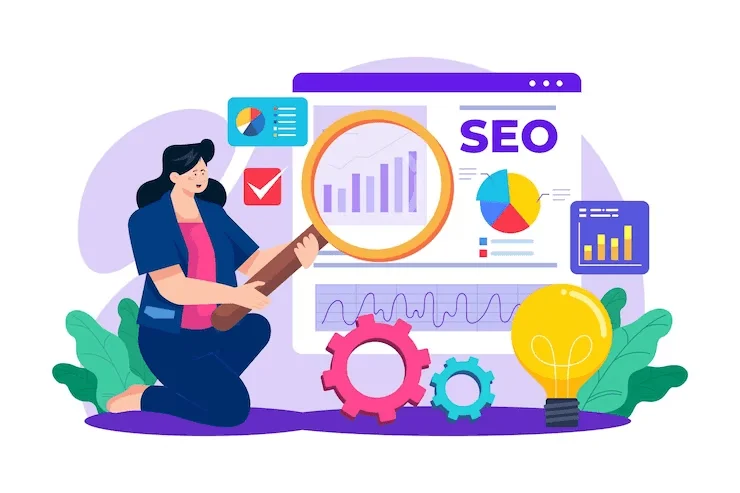Mastering SEO Magic: A Beginner’s Odyssey to Online Visibility in 2024
SEO: What’s the Buzz About?
Search Engine Optimization, commonly known as SEO, isn’t just a buzzword—it’s the backbone of online visibility in the digital age. Think of the internet as a vast ocean, and your website as a boat. SEO is the sail, the compass, and the map, ensuring your boat reaches its destination.
In 2023, with billions of searches happening daily, standing out requires strategy. It’s estimated that 75% of users don’t scroll past the first page of search results. This highlights the critical role SEO plays in navigating the vast digital ocean.
Keywords and content are at the heart of SEO. However, it’s more than just inserting popular words into your content; it’s about understanding user intent, creating value, and ensuring your website is a beacon of relevance in the search landscape.
But don’t be overwhelmed. Let’s embark on this journey, decoding the SEO labyrinth one step at a time.Starting with Keywords: The Compass Points
Keywords are the linchpin of SEO. They are the phrases and terms users type into search engines when looking for content. As a content creator, understanding and implementing the right keywords can catapult your site’s visibility.
With tools like Google’s Keyword Planner and SEMrush, you can identify high-traffic keywords relevant to your niche. But remember, it’s not just about volume. The relevance and intent behind the keyword are equally crucial.
The rise of voice search, powered by smart devices, has made long-tail keywords—specific phrases of three or more words—more important than ever. For instance, instead of “best shoes,” users might voice search “best running shoes for flat feet.”
Remember, while keywords act as your compass, avoid stuffing them. Use them organically, ensuring they flow seamlessly within your content, enhancing user experience.Content: More than Just Words
At the core of SEO lies content. Content isn’t just words; it’s value, relevance, and engagement wrapped in text, visuals, or multimedia. Think of it as the substance that keeps your audience glued to your site.
Originality is key. Duplicate or plagiarized content is not just frowned upon—it can lead to penalties. Google’s algorithms have evolved, with updates like BERT and MUM focusing on understanding context and user intent more than ever.
Invest in evergreen content—topics that remain relevant over time. Such content continually drives traffic and acts as a pillar for your site. Additionally, consider the content length. Studies suggest that in-depth articles, often exceeding 2,000 words, tend to rank higher.
But it’s not just about quantity; quality reigns supreme. Well-researched, engaging, and valuable content is the magnet that attracts and retains readers.Link Building: Weaving the Web Together
Links are the highways of the internet. They connect one piece of content to another, offering users more avenues to explore. Backlinks, links from other sites pointing to yours, are SEO gold.
High-quality backlinks are signals of trust to search engines. Sites like Forbes, Harvard, or BBC linking back to you are strong endorsements. However, quality trumps quantity. A few backlinks from reputable sites are better than numerous links from low-authority domains.
Internal links, connecting one page of your site to another, boost user engagement. They create a cohesive structure, guiding users through a journey on your site. This not only improves user experience but reduces bounce rate.
However, tread carefully with link-building strategies. Practices like buying links or using link farms—sites created solely for linking purposes—are black-hat techniques that can lead to penalties.Technical SEO: Under the Hood
While keywords and content cater to users, technical SEO caters to search engines. It’s the behind-the-scenes optimization ensuring search engine crawlers can easily find, interpret, and index your site’s content.
Site speed is a major ranking factor. Slow-loading sites increase bounce rates and diminish user experience. Tools like Google’s PageSpeed Insights provide insights and recommendations to improve load times.
Mobile optimization is non-negotiable. With mobile searches surpassing desktop, ensuring your site is responsive—adapting to different screen sizes—is pivotal. Google’s mobile-first indexing prioritizes mobile-friendly sites.
Moreover, consider factors like XML sitemaps, structured data, and secure browsing (HTTPS). These components ensure search engines can crawl your site efficiently and safely.On-Page SEO: The User’s Playground
This facet focuses on optimizing individual pages, enhancing both user experience and page rank. It’s where keywords, content, and technical aspects converge to cater to the end user.
Meta titles and descriptions act as content snippets, giving users a preview of what to expect. While they should be enticing, ensure they accurately represent the content.
Image optimization plays a dual role. Relevant images enrich user experience, while alt texts—descriptions of images—ensure search engines understand the image’s context.
Additionally, ensure your URL structure is clean and descriptive. URLs act as signposts, guiding users and search engines about the page’s content.Local SEO: Dominating the Neighborhood
For businesses with a physical presence or serving a specific locale, local SEO is a game-changer. It optimizes your online presence for local searches, ensuring you dominate your neighborhood’s digital space.
Ensure your business is listed on Google My Business (GMB). GMB listings include crucial information like address, hours of operation, and customer reviews, and they often appear at the top of local searches.
Reviews play a pivotal role in local SEO. Encourage satisfied customers to leave positive reviews. Respond to feedback, both positive and negative, showcasing your commitment to customer satisfaction.
Remember, consistency is key. Ensure your business’s name, address, and phone number (NAP) are consistent across all online platforms and directories.
SEO Tools: Arming Yourself
In the ever-evolving world of SEO, tools are your allies. They offer insights, analytics, and recommendations, ensuring you’re always ahead of the curve.
Google Analytics provides a treasure trove of data—visitor demographics, behavior, and sources. It’s your window into user behavior, allowing you to tailor your strategy accordingly.
For keyword research, SEMrush and Ahrefs are industry favorites. They provide keyword volumes, difficulty scores, and even competitor analysis.
While tools offer valuable insights, remember, they are aids, not substitutes. A successful SEO strategy is a blend of data-driven insights and human intuition.SEO Pitfalls: Steering Clear
As with any domain, SEO has its pitfalls—practices that might seem beneficial but can harm in the long run. Staying informed ensures you steer clear of these traps.
Keyword stuffing, the excessive use of keywords, deteriorates content quality. It’s an outdated practice that can lead to penalties. Focus on organic keyword usage that enhances content value.
Buying backlinks or engaging in dubious link schemes are black-hat tactics. They might offer short-term gains, but the risk of penalties makes them unsustainable.
Lastly, ensure your content is original. Duplicate content can lead to lowered rankings, diminishing your site’s credibility and visibility.The Voice Search Revolution
With the proliferation of smart devices, voice search has surged. It’s estimated that by 2024, over 50% of online searches will be voice-based.
This revolution underscores the importance of long-tail keywords and conversational content. Users don’t voice search “weather New York”; they ask, “What’s the weather like in New York today?”
Adapting to voice search isn’t just about keywords. Ensure your site’s technical SEO is robust, as speed and mobile optimization play pivotal roles in voice search rankings.Beyond Google: Other Search Engines
While Google dominates, remember, other search engines like Bing, Yahoo, and DuckDuckGo have sizable user bases. Diversifying your SEO strategy ensures you don’t put all your eggs in one basket.
Each search engine has its algorithms and ranking factors. While core practices remain consistent, nuances exist. For instance, Bing places significant emphasis on social media signals.
Diversifying ensures you tap into wider audiences and insulate yourself from potential algorithmic changes in any one search engine.Conclusion: Embracing the SEO Odyssey
SEO is more than just a tactic; it’s an ongoing odyssey in the ever-evolving digital landscape. With billions of web pages vying for attention, staying informed, adaptable, and user-focused ensures you sail smoothly in the online ocean.
Your website is your digital storefront. SEO ensures it’s brightly lit, easily accessible, and welcoming. Embrace the journey, equip yourself with the right tools, and watch your online presence flourish.